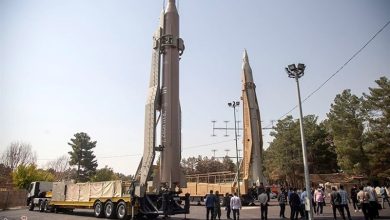
The Israeli regime has killed at least 72 more people and injured 400 others in Lebanon on the third consecutive day of psychopathic bombardment of the Lebanese territory amid the intensifying conflict with Hezbollah.
The Lebanese health ministry announced the casualties on Wednesday, saying they had been caused during Israeli airstrikes against the country earlier in the day.
The airstrikes included rare bombardment of the villages of Joun and Maaysra—mountain areas outside Hezbollah’s traditional strongholds in southern and eastern Lebanon.
The regime’s military reported conducting strikes in the Nabatiyeh region, with the National News Agency indicating that an Israeli strike partially damaged a hospital there.
The Lebanese ministry stated that the strike on Joun in the Chouf mountains southeast of Beirut resulted in four fatalities, while another strike in Maaysra, a Shia-majority village about 25 kilometers north of Beirut, killed three people.
Additionally, nine individuals were killed in strikes in southern Lebanon, and seven in the east.
Meanwhile, the United Nations reported that approximately 90,000 people have been displaced in Lebanon due to the ongoing Israeli bombardments targeting what the regime claims to be Hezbollah positions.
Since September 23, the UN’s International Organization for Migration has recorded “90,530 newly displaced persons” in Lebanon.
The United Nations High Commissioner for Refugees (UNHCR) has expressed concern over the escalating tensions in Lebanon.
“International humanitarian law must be upheld, and ensuring the protection of civilians is a critical obligation,” the UNHCR stated on X.
“We are committed to standing by Lebanon during this critical time.”
The Israeli regime claimed to have hit more than 280 Hezbollah targets in Lebanon on Wednesday alone.
Meanwhile, the head of Israel’s Northern Command said the military should “strongly prepare” for a potential ground offensive into Lebanon.
The regime has announced plans to call up reserve brigades for operational activities in the north.
Hezbollah responds
Hezbollah announced it had fired a ballistic missile that reached Tel Aviv for the first time.
Hezbollah also claimed missile strikes targeting the Sa’ar kibbutz near Nahariya in northern Israel, resulting in injuries, according to local media reports.
Since the Palestinian resistance group Hamas conducted the unprecedented Operation Al-Aqsa Storm on October 7, 2023, Hezbollah and Israel have engaged in near-daily exchanges of cross-border fire.
On September 23, Israel conducted devastating strikes across southern and eastern Lebanon, resulting in over 550 deaths—the deadliest single-day toll since 2006.
These attacks followed explosions from communication devices that killed 39 people and injured thousands on September 17 and 18.
Three days of Israeli bombardment of Lebanon since September 23 has left at least 641 people dead.







